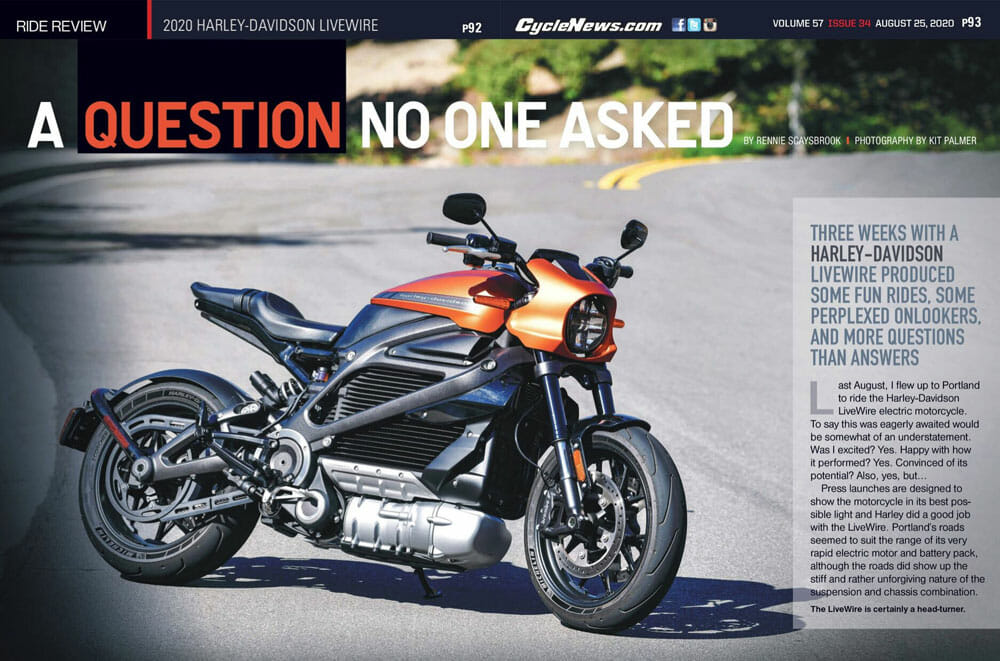Rennie Scaysbrook | August 28, 2020
Three weeks with a Harley-Davidson LiveWire produced some fun rides, some perplexed onlookers, and more questions than answers.
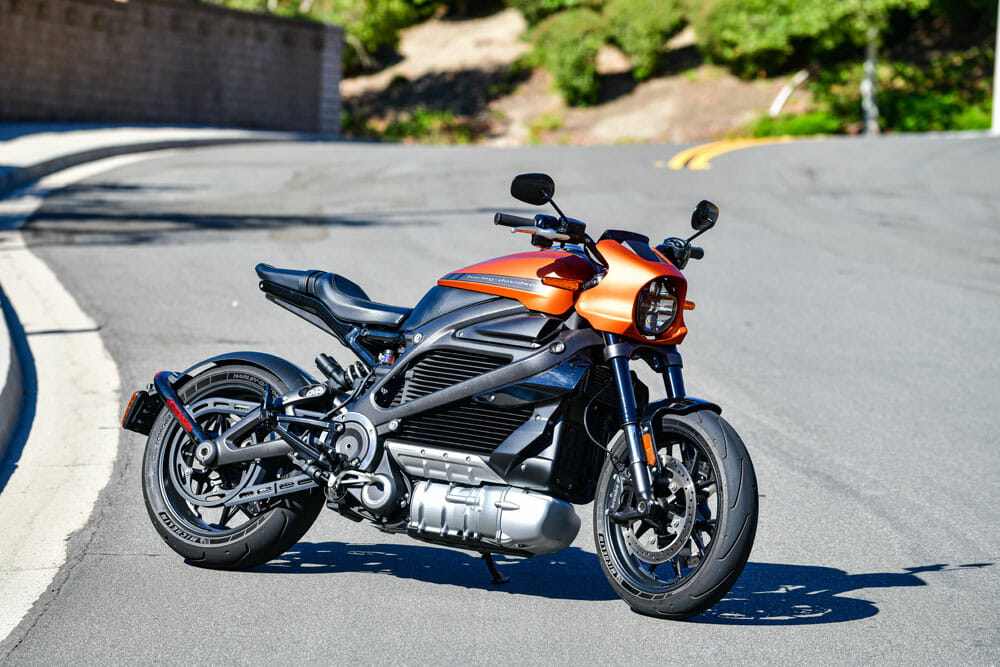 The LiveWire is certainly a head-turner.
The LiveWire is certainly a head-turner.
Photography by Kit Palmer
Last August, I flew up to Portland to ride the Harley-Davidson LiveWire electric motorcycle. To say this was eagerly awaited would be somewhat of an understatement. Was I excited? Yes. Happy with how it performed? Yes. Convinced of its potential? Also, yes, but…
Press launches are designed to show the motorcycle in its best possible light and Harley did a good job with the LiveWire. Portland’s roads seemed to suit the range of its very rapid electric motor and battery pack, although the roads did show up the stiff and rather unforgiving nature of the suspension and chassis combination.
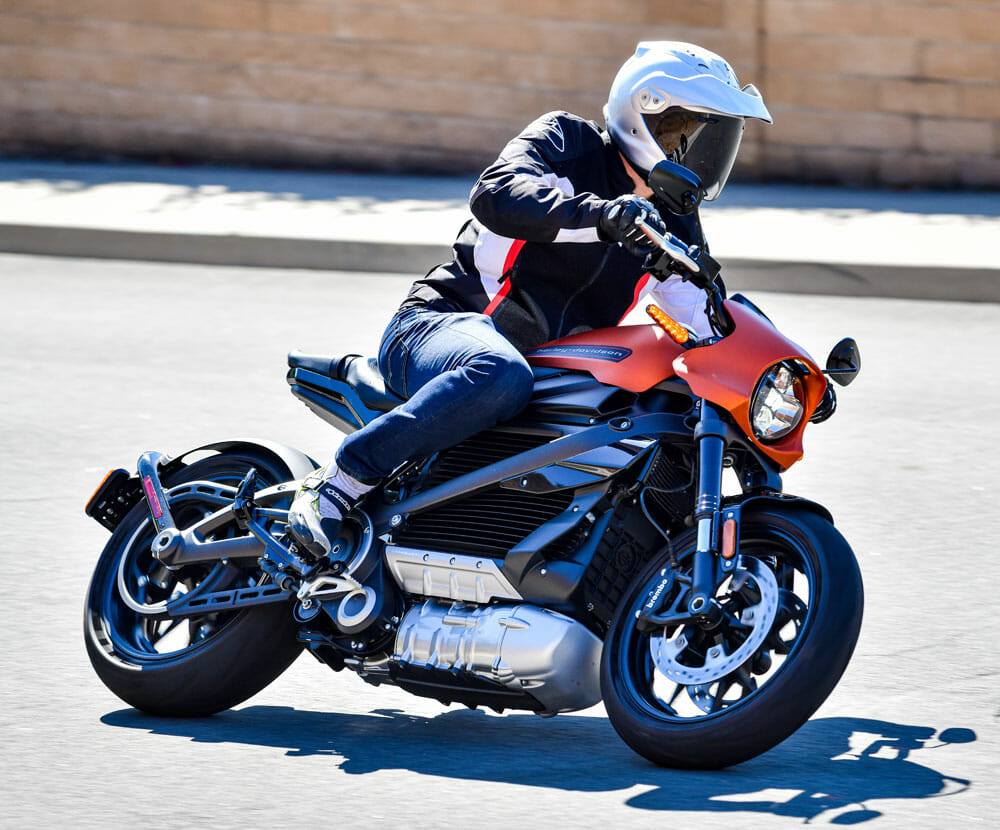 The side of the tire behavior is quite good on the LiveWire. Harley-Davidson has done well to keep the center of gravity nice and low.
The side of the tire behavior is quite good on the LiveWire. Harley-Davidson has done well to keep the center of gravity nice and low.
As such, judgement was reserved until I got hold of one a year later (can’t believe it’s already been that long), for a three-week sojourn in So Cal. Would the range be up to LA-style riding, what with its masses of freeways that are a must to get anywhere? Would I be so enamored with the LiveWire that I’d consider throwing down $30K for one? Read on.
At $29,799, the LiveWire is the sixth most expensive motorcycle in its range of street bikes/cruisers (not including trikes, because, you know, they ain’t real bikes). For that money, you get far and away the sportiest machine in the Harley’s line-up. And when you consider the electric propulsion, that makes the LiveWire ironic in the extreme.
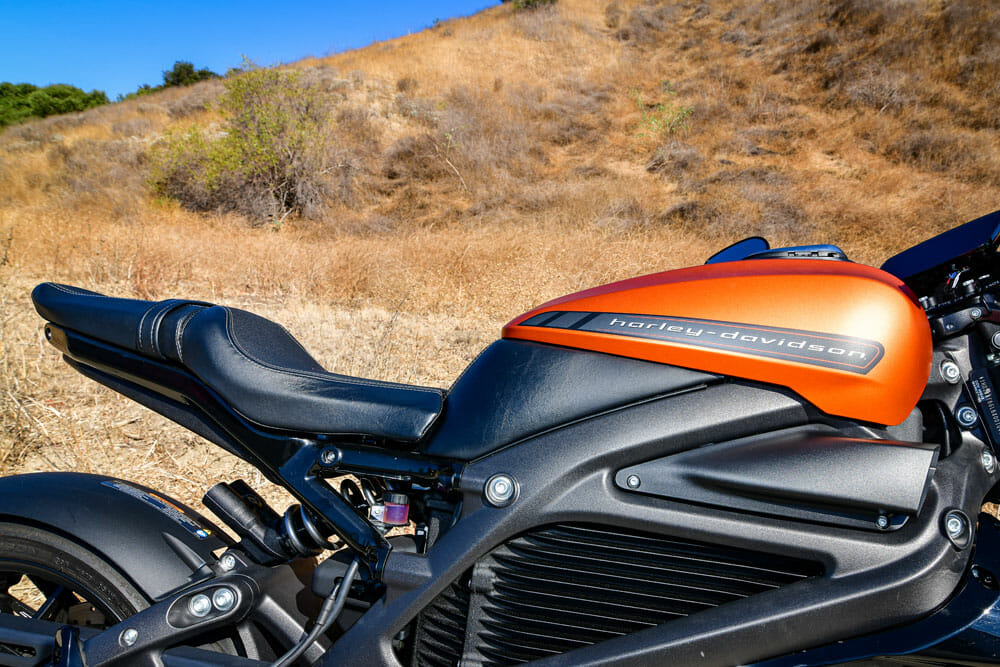 Fit and finish on the LiveWire is excellent. The metallic paint comes up real nice.
Fit and finish on the LiveWire is excellent. The metallic paint comes up real nice.
Electric motorcycle manufacturers love to pipe on about how all the torque is available from zero rpm. That means you get all the go, all the time, and believe me, there’s lots of go with the LiveWire.
20-60 mph roll-ons provide such acceleration it’s genuinely hard to believe it’s Harley-Davidson giving you this experience, not Yamaha, Ducati or Aprilia. Pin the throttle even from a standstill and you’re fired toward the horizon faster than most supercars, but it’s when you’re already moving that the acceleration really shines. It’s not just fast for a Harley, it’s fast, full stop.
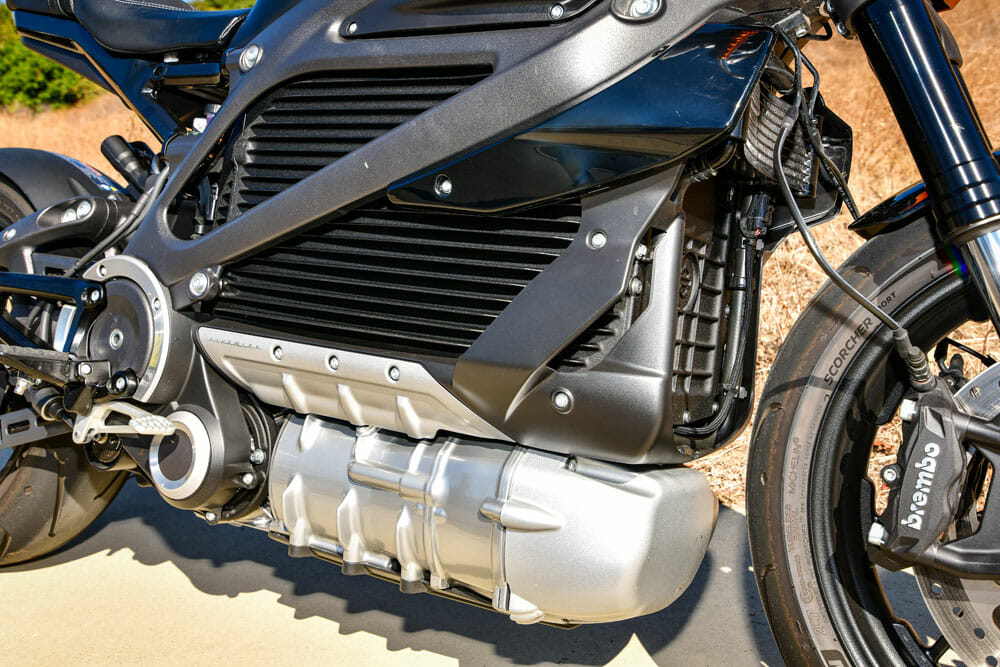 There’s 86-lb-ft of torque available from the electric motor, and it’ll propel you into your near future extremely rapidly.
There’s 86-lb-ft of torque available from the electric motor, and it’ll propel you into your near future extremely rapidly.
My absolute favorite part of the LiveWire is the throttle response. Harley has done exceptionally well on this front, mapping a connection between the rider and the twist grip that’s the best I’ve ever experienced on an electric motorcycle and one of the best on any gasoline motorcycle, for that matter. The importance of such a feat needs to be emphasized, because, unlike its petrol-powered brethren, the LiveWire has no emissions laws to adhere to, which is the enemy of a nice throttle response in terms of the fuel-injection mapping required to pass said laws.
The throttle is delightfully deft, allowing the rider to dial in as much go as they like so fluidly, it’s almost telepathic. Wind it on and things happen so quick you don’t have time to think about the lack of noise, or the missing gearbox—you’re simply concerned with enjoying a ride so very different to what you’d expect from the Bar & Shield.
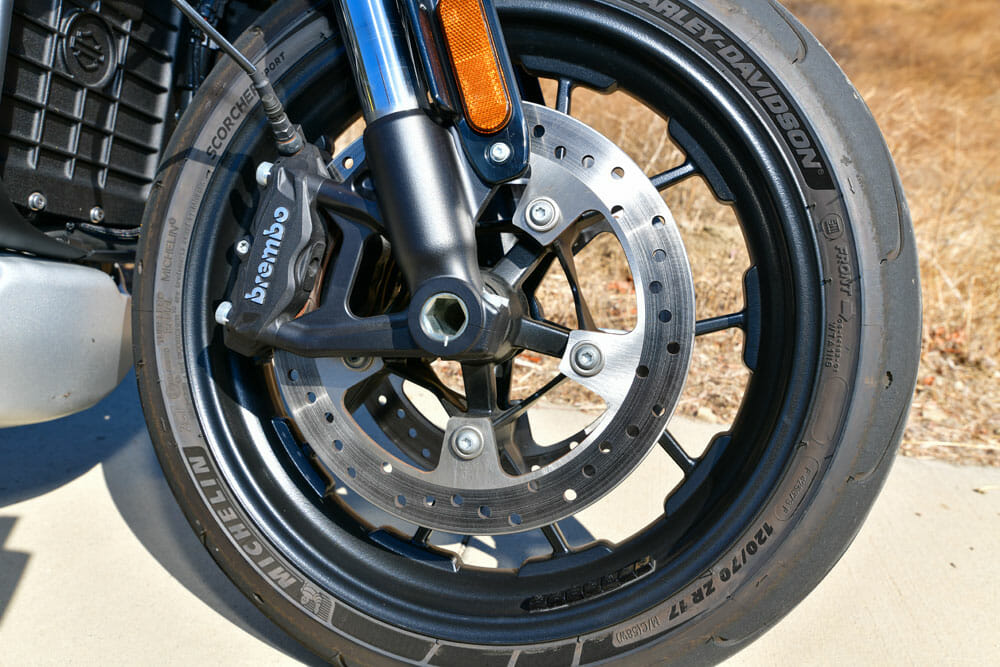 Brembo radial-mounted calipers have plenty of stopping power, but the LiveWire lacks feel at the lever.
Brembo radial-mounted calipers have plenty of stopping power, but the LiveWire lacks feel at the lever.
That is until you look at the dash and see your range disappearing like Houdini on a bender.
Here’s my least favorite part of the LiveWire. The range from the 15.5kWh battery is simply not good enough, not if your riding includes freeways, city riding, urban commuting, you know, all the places you go on any given ride.
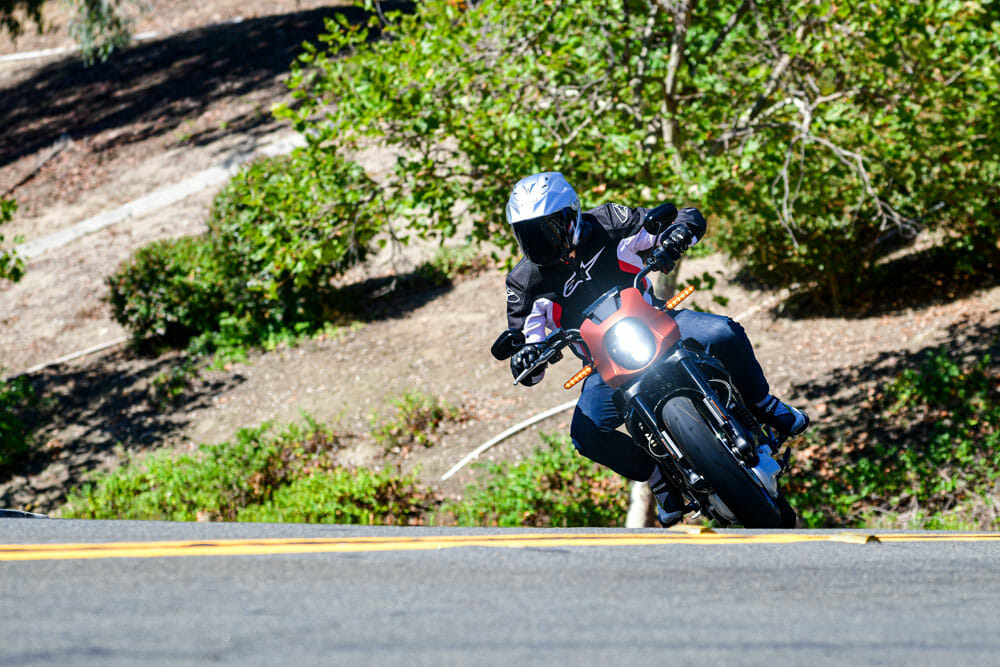
When I left my place to spend a morning shooting photos for this article, I had the LiveWire charged to the hilt. A full 100 percent range showed, and I was off and running. My ride included a little bit of suburbia, a quick stint on the freeway, a canyon scratch, some more suburbia, and another short highway leg home. That totaled 73.4 miles, leaving me with seven percent charge available and a quoted six miles of range.
Granted, this was in the Road mode (you get Sport, Road, Rain and Range—that final mode is designed to work the regenerative braking as hard as possible to get more charge back into the battery when you roll off the throttle). I should have put it in Range but wanted to see how far I’d go just using the Road setting, which has a little less regenerative braking.
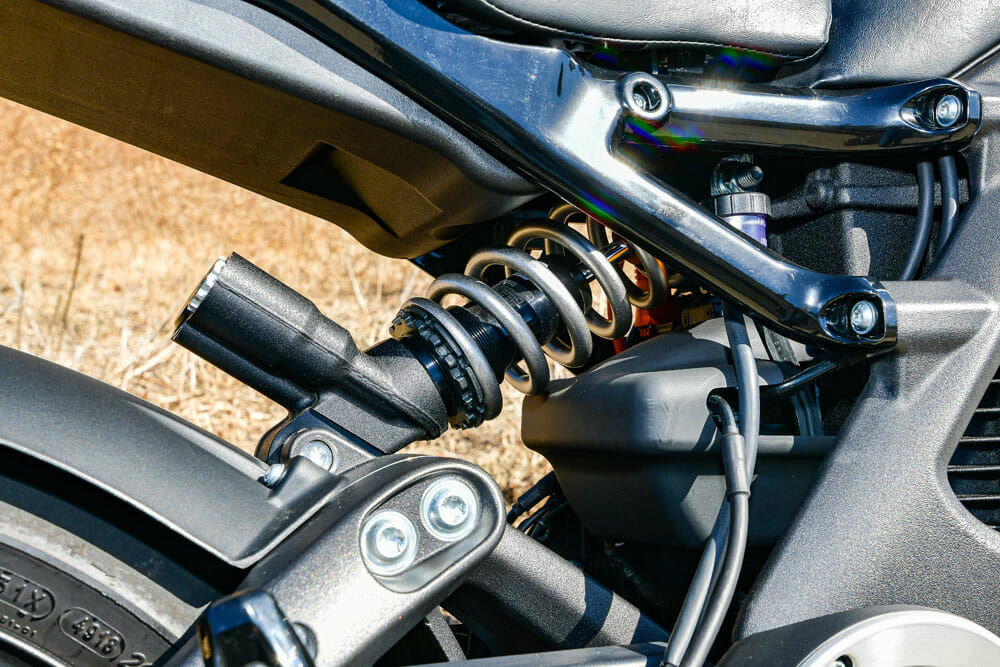 With the shock bolted straight to the swingarm, the ride at the back end is a little harsh.
With the shock bolted straight to the swingarm, the ride at the back end is a little harsh.
The result? A possible 80-miles range in Road mode. For a $29,799 MSRP motorcycle. Excuse me in my criticism, but that’s a joke. When I returned home, I plugged the LiveWire into the wall and was shown it would take 10 hours and 43 minutes to charge back to full.
Harley-Davidson did not fit Level Two charging (Level One and Two charge at the same rate), but you can roll up to any Level Three DC Fast Charge station across the country and go from zero to 80 percent in 40 minutes, or 100 percent in an hour, and with the abundance of Level Three stations around in populated urban areas, getting a charge shouldn’t be an issue. However, you can’t be happy if you ride for 80 miles and you have to sit for an hour each time you need a charge. Where the LiveWire becomes a viable alternative is if you ride 20-25 miles each way to work and can charge it when you get home, or even at work. Other than that, it’s not a convincing argument.
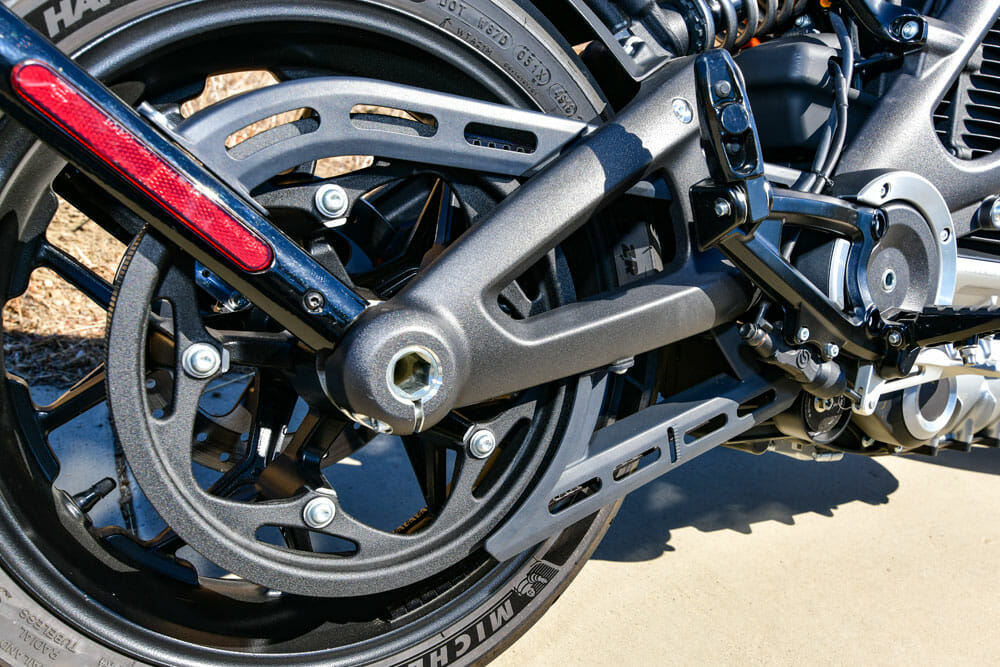 Purely silence from the steel belt. Lovely.
Purely silence from the steel belt. Lovely.
One interesting thing is that electric motors, not just the Harley, are claimed to attain better rage if you use them in stop/start situations, like city traffic, compared to using them at a constant speed on the freeway, like gas bikes.
Harley claims 146 miles of range when used in “city” riding, however, I could not get a better average than about 1.1-1.3 percent of range per mile while riding around my local streets, which was as close to NYC-style riding as I could get.
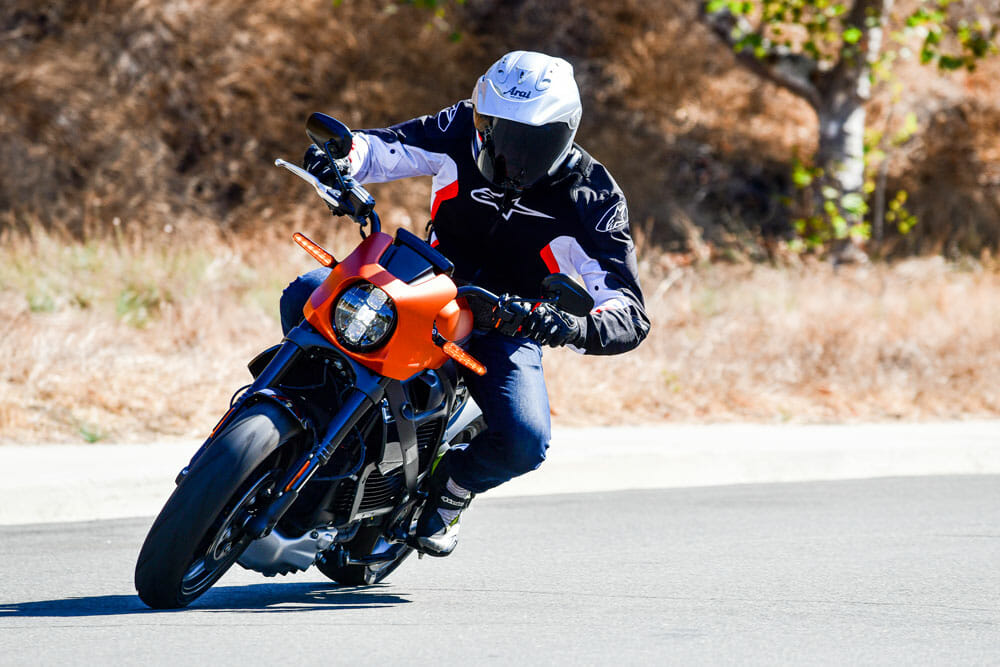 Ride position is perfectly spaced for a six-foot-tall rider. Shorter riders may find the reach to the bars a touch long.
Ride position is perfectly spaced for a six-foot-tall rider. Shorter riders may find the reach to the bars a touch long.
That would then get me close to about 90-95 miles of range, way below what Harley quotes. However, I can’t comment definitively on the “city” range until I just take one into downtown LA and dodge the tent cities for a day. But then I’d be stuck there, for at least an hour, until I got a DC Fast Charge top up.
It must have been tough for Diego Cardenas, the Californian who rode a LiveWire from San Diego to the Canadian border by riding the West Coast Green Highway. The optimal word here is “highway.” That’s the area where you get the least amount of range from a given charge. Cardenas rode over 1400 miles and took eight days to get there (presumably he was just out for a long cruise, rather than to make time). If he did it in even half that time, he’d be stopping so much to charge he may as well have taken the train.
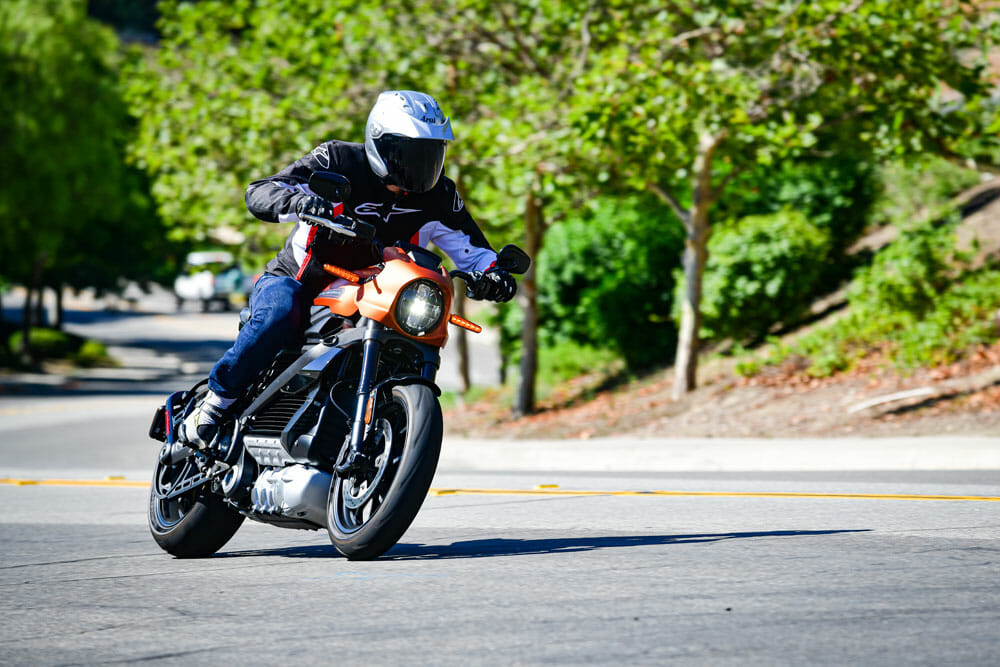
It may sound like I’m being an a-hole here, and in some respects, I am. However, riding with one eye constantly on the remaining range is not only annoying, it detracts from an otherwise excellent motorcycle.
The fit and finish on the LiveWire is superb, as is the 4.3-inch touchscreen that actually does work with gloves, rather than just the company saying it does. There’s cruise control, decent brakes, although the feel at the lever is a little wooden, and comfort is generally pretty good despite the stiff suspension. There’s a bit of a reach to the ’bar, but it helps overall comfort by helping the rider lean into the wind without putting much weight on the wrists.
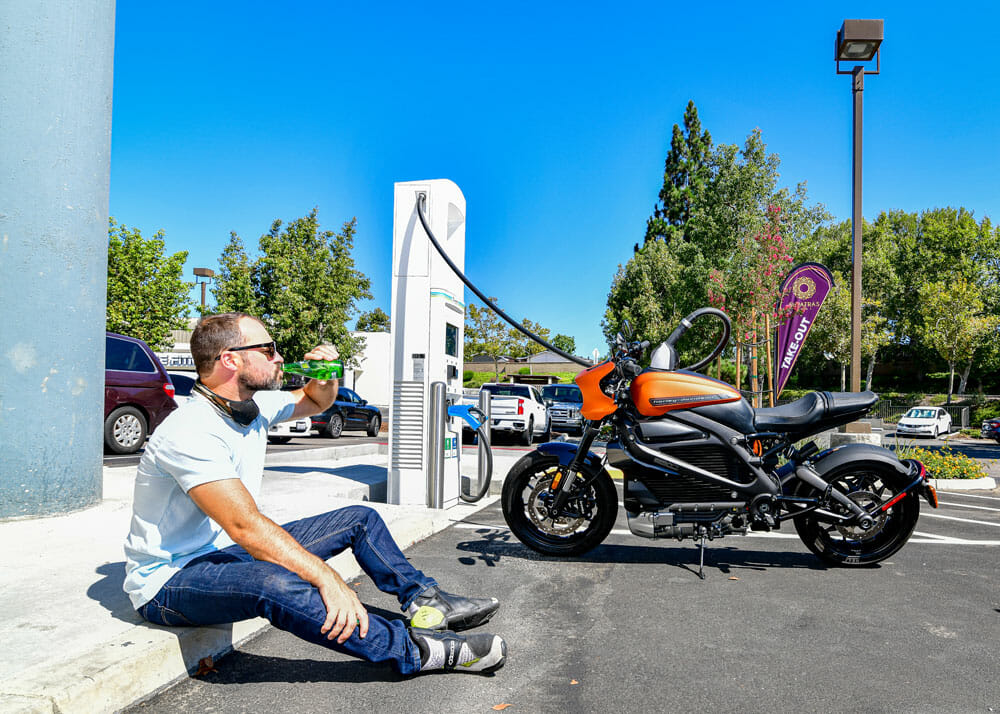 Harley-Davidson has an app that tells you where you can charge up. Use it. You’ll need it.
Harley-Davidson has an app that tells you where you can charge up. Use it. You’ll need it.
Oh, and the looks on people’s faces when you glide past, proud and silent, letting the paint shimmer in the sun, is almost worth the ticket price alone.
But the range means I cannot recommend the LiveWire over a gas machine. Not yet, at least. Bummer, because there’s nothing like the jollies you get from pinning a LiveWire at 20 mph and see 80 mph flash up on the screen before your mind has had a chance to catch up. It’s stupid fast, and in that regard, already way ahead of most gas bikes.
Hopefully, one day, in a few decades from now, someone will read this article and say, “man, how far we’ve come!” Electric bikes will only get better from here, charge times will reduce, range will increase, and so on. But that time isn’t here yet. CN
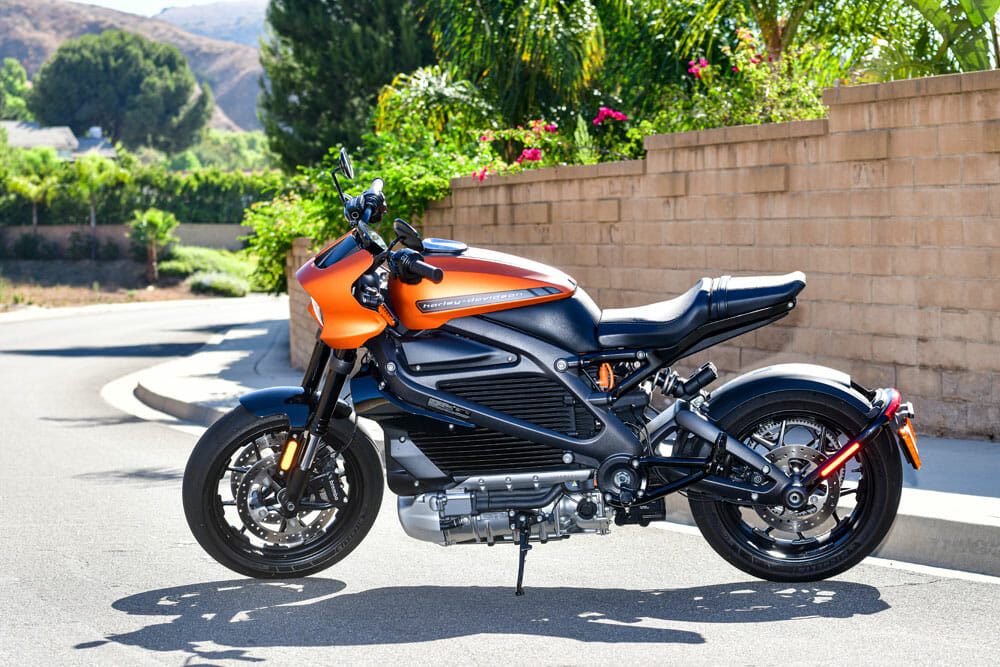
2020 Harley-Davidson LiveWire Specifications
|
|
| MSRP: |
$29,799 |
| Power unit: |
Revelation Internal Permanent Magnet Synchronous Motor with Water Jacket cooling |
| Type: |
Lithium Ion |
| Capacity: |
15.5 kWh |
| Charging: |
Onboard DC to DC conversion |
| Power: |
105 hp |
| Torque: |
85.5 lb-ft |
| Chassis: |
Cast aluminum |
| Front suspension: |
43mm Inverted Separate Function Fork, fully adjustable |
| Rear suspension: |
Balance Free Rear Cushion Lite (BFRC-lite), fully adjustable |
| Front brake: |
Dual 300mm disc, 4-piston caliper, ABS optional |
| Rear brake: |
260mm disc, 1-piston caliper, ABS optional |
| Front tire: |
120/70 ZR17 |
| Rear tire: |
180/55 ZR17 |
| Wheelbase: |
58.7 in. |
| Seat height: |
30 in. |
| Weight (claimed): |
549 lbs. |
| Color: |
Orange Fuse, Yellow Fuse, Vivid Black |
